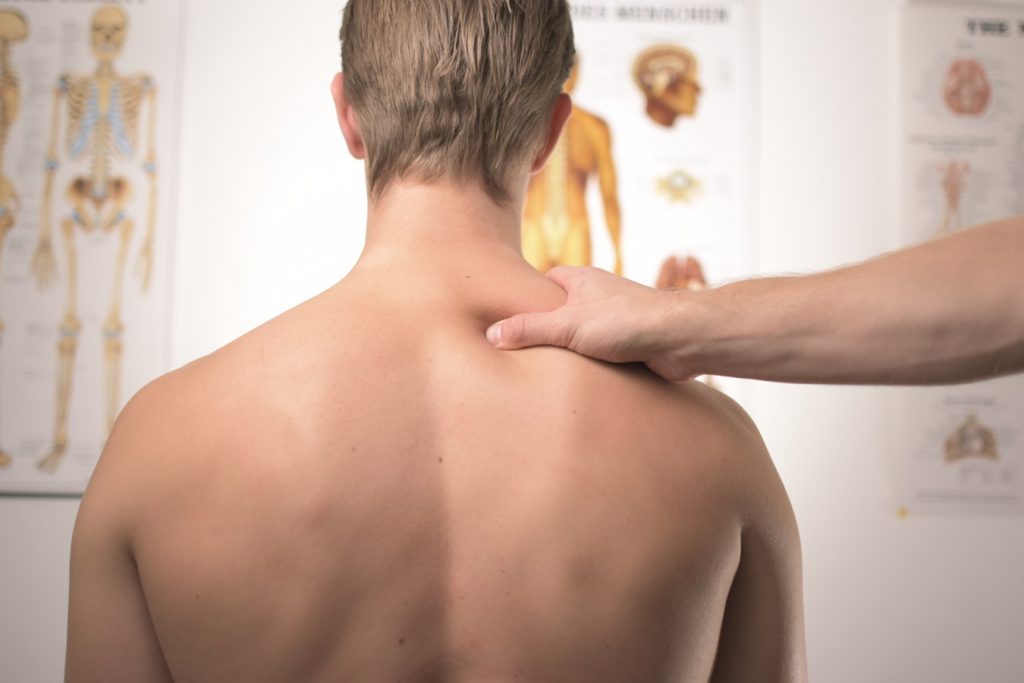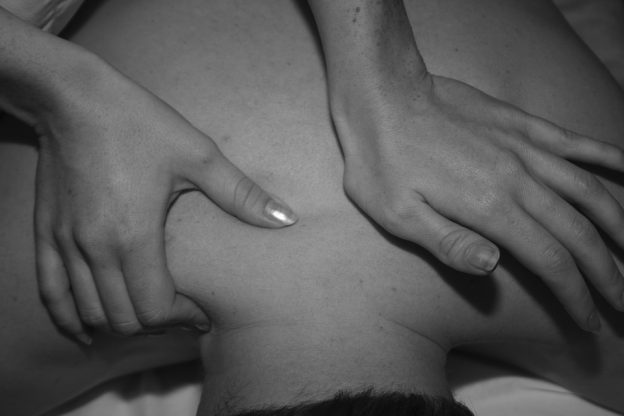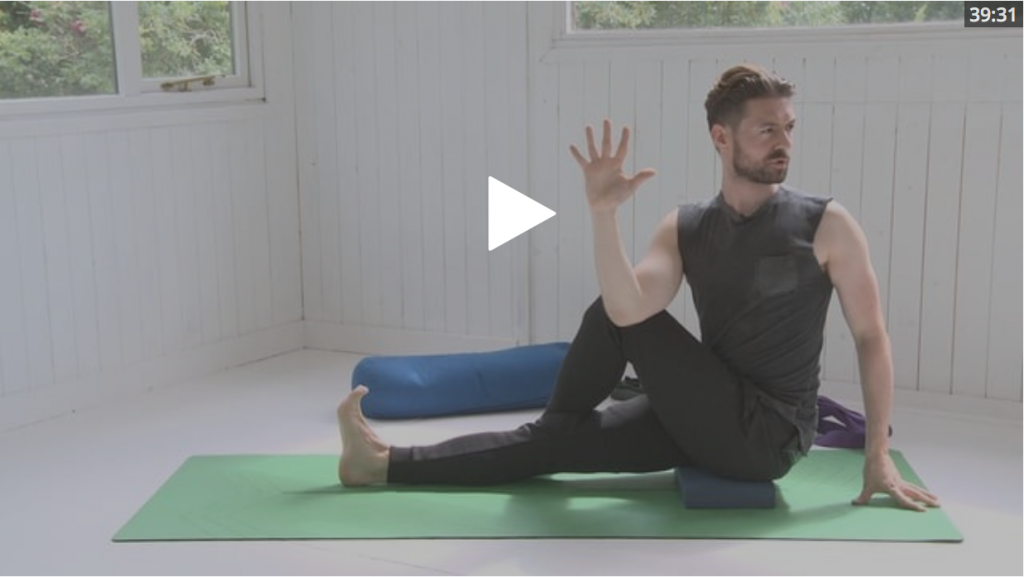Do you hold tension in your neck and shoulders? Dr Yogi, aka Andrew McGonigle, explains why and shares 7 ways to solve it.

Neck tension has become very common in modern day life and can have a big impact on our energy levels, mental clarity and general wellbeing.
Let’s start by quickly looking at the anatomy of the neck and shoulders:

- The cervical spine is made up of 7 vertebrae that lie between the base of the skull and the top of the ribcage.
- The cervical spine is the area of the spinal column that has the greatest range of movement.
- This naturally makes it also the least stable part of the spine.
- This area relies on ligaments and muscles for stability.
- The top two vertebrae are the only adjacent vertebrae in the spinal column not to have an intervertebral disc between them.
Here are some of the common causes of neck tension:
- A lack of mobility in the upper back (thoracic spine), shoulder joint and shoulder girdle can cause the neck to overcompensate and lead to strain.
- Clenching our jaw when we are stressed or grinding our teeth at night can lead to jaw tension which in turn leads to neck tension.
- Holding the head in a forward position (commonly referred to as “text neck”) increases the force that the weight of the head puts on the cervical spine and can lead to hyper-tonicity of the neck muscles to hold the head in that position.

- Not regularly moving the cervical spine in its full range of controlled movement can weaken the neck musculature which the nervous system responds to by creating hyper-tonicity in order to make the area more stable.
- Bearing too much weight on the head during Headstand can cause wear and tear to the top two cervical vertebrae.
- Not maintaining the natural curve of the neck during. Shoulderstand can strain the posterior longitudinal ligament leading to instability.
- Psychologically we “carry the weight of the world on our shoulders” and tense our shoulders when we are stressed.
Here are my top tips for tackling neck and shoulder tension:
- Focus on increasing the full range of controlled movement of your thoracic spine, shoulder joint and shoulder girdle as part of your daily yoga practice
- Start to notice when you are clenching your jaw on and off the mat and massage this area each morning to release tension
- Become aware of your head position on and off the mat and become accustomed to correcting the alignment
- Regularly move your neck through its full range of movement in a controlled way to increase mobility and reduce hyper-tonicity
- During Shoulderstand maintain the natural curve of your neck by gently keeping your chin lifted or better still practice with your shoulders supported on a yoga blanket
- During Headstand avoid putting too much weight on the head particularly when transitioning in and out of the asana
- Avoid dropping your head back during your practice but maintain the length of your neck as you extend your neck in a controlled way
In my this class on Movement For Modern Life we focus on increasing the mobility of the thoracic and cervical spine. As part of a regular practice this will serve to reduce neck tension and improve overall wellbeing.
>>Release Tension in the Upper Back>>
 This post was written by Andrew McGonigle, a yoga teacher, massage therapist and anatomy teacher with a background in western medicine. Based in London, Andrew has been practicing yoga and meditation for 10 years and teaching since 2009. Teaching exclusively at triyoga, Andrew’s classes are open to all levels and encourage students to develop awareness of patterns of tension in their bodies with a goal to release stress. Andrew teaches anatomy and physiology on many different Yoga Teacher Training courses in London and internationally. Find Dr. Yogi on Facebook.
This post was written by Andrew McGonigle, a yoga teacher, massage therapist and anatomy teacher with a background in western medicine. Based in London, Andrew has been practicing yoga and meditation for 10 years and teaching since 2009. Teaching exclusively at triyoga, Andrew’s classes are open to all levels and encourage students to develop awareness of patterns of tension in their bodies with a goal to release stress. Andrew teaches anatomy and physiology on many different Yoga Teacher Training courses in London and internationally. Find Dr. Yogi on Facebook.






Leave a Reply